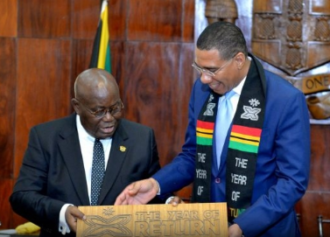
The Silver Workers of The Panama Canal — The Dynamite Crew (The Silver People Heritage WordPress)
The extraordinary history and heritage associated with the construction of the Panama Canal has been recorded since the 19th century, through a magnificent collection of stamps, archival records and photographs, which have been inscribed on the UNESCO Memory of the World Register and are being shared with the world.
As Panama gets sets to inaugurate the expansion of this vital waterway on Sunday June 29, the Director of the UNESCO Cluster Office in San Jose is hailing the extraordinary contributions of thousands of Caribbean laborers whose hard work paved the way for the expansion.
“The history behind this construction is compelling. We also take note of one aspect of the construction which is not often highlighted – the contributions of the laborers. Over 100,000 people journeyed to Panama to work on this project. Many of them never returned.
Fathers and mothers left their homelands and families behind in search of better opportunities. This movement of people had a significant impact on the Caribbean and Panamanian societies,” Pilar Alvarez-Laso noted.
This documented collection entitled “Silver Men: West Indian Laborers at the Panama Canal,” has been promoted by UNESCO through the Memory of the World Program since 2011. Its inscription was championed by Jamaica, St. Lucia, Panama, Barbados, the United Kingdom and the United States.
The collection also highlights the recruiting process which was ultimately responsible, both directly and indirectly, for the extraordinary pattern of West Indian emigration – one of the most significant movements of voluntary migration to emerge during the post emancipation period after 1838.
The UNESCO official stressed that the inscription of this collection reaffirms the vital role of the Memory of the World Program. The vision of the Memory of the World Program is that the world’s documentary heritage belongs to all, and should be fully preserved, protected and be permanently accessible to all without hindrance.
Read more here.


